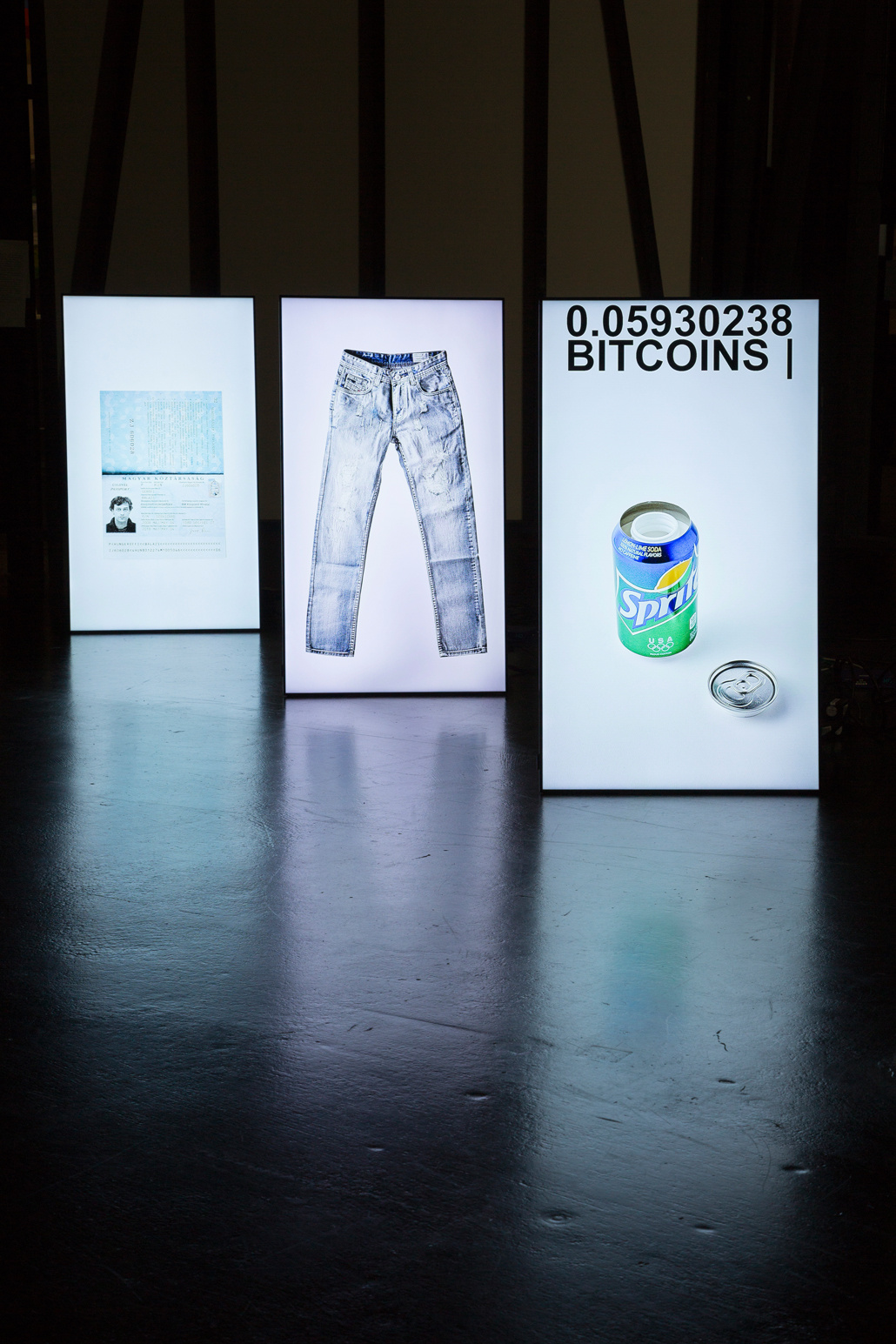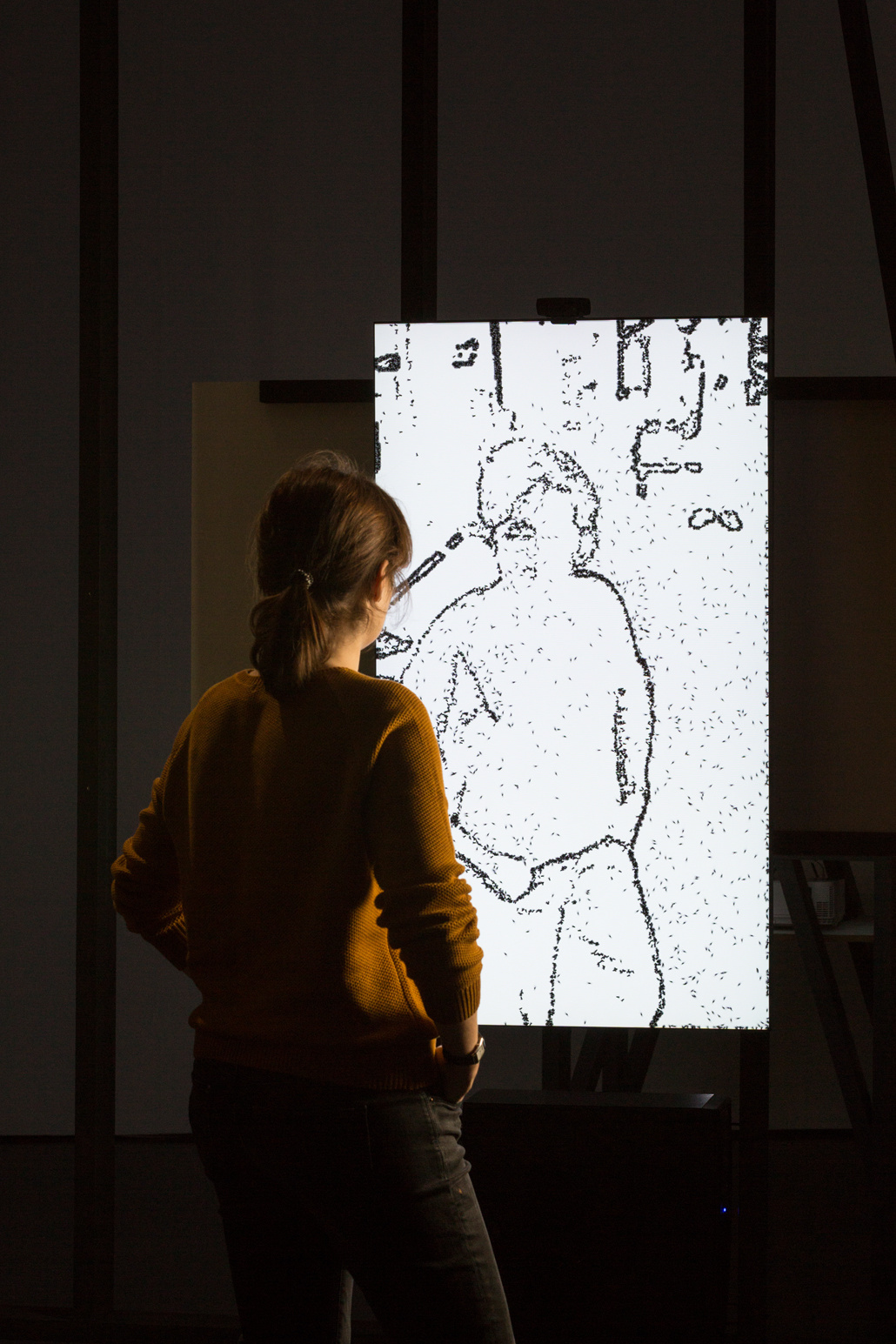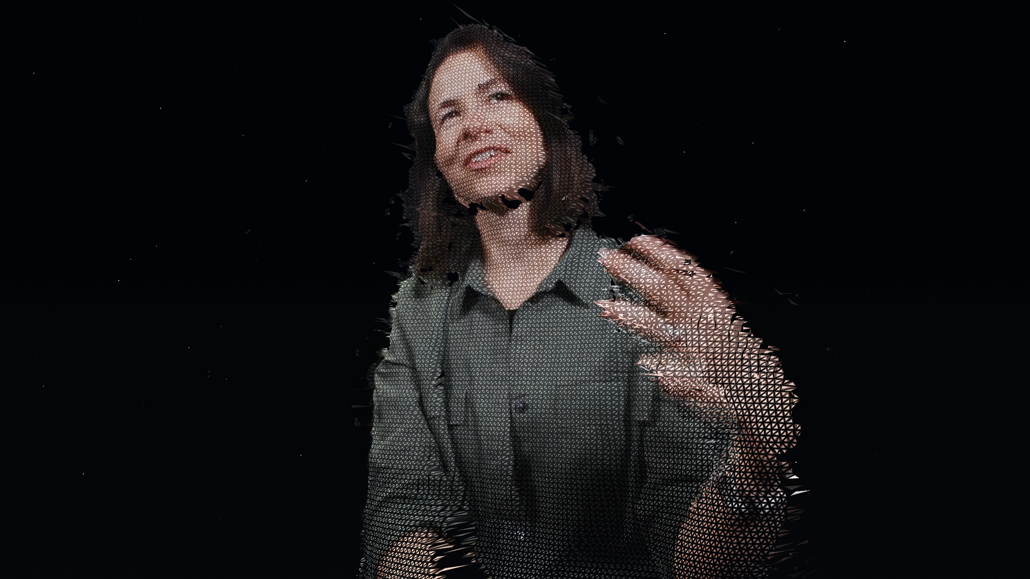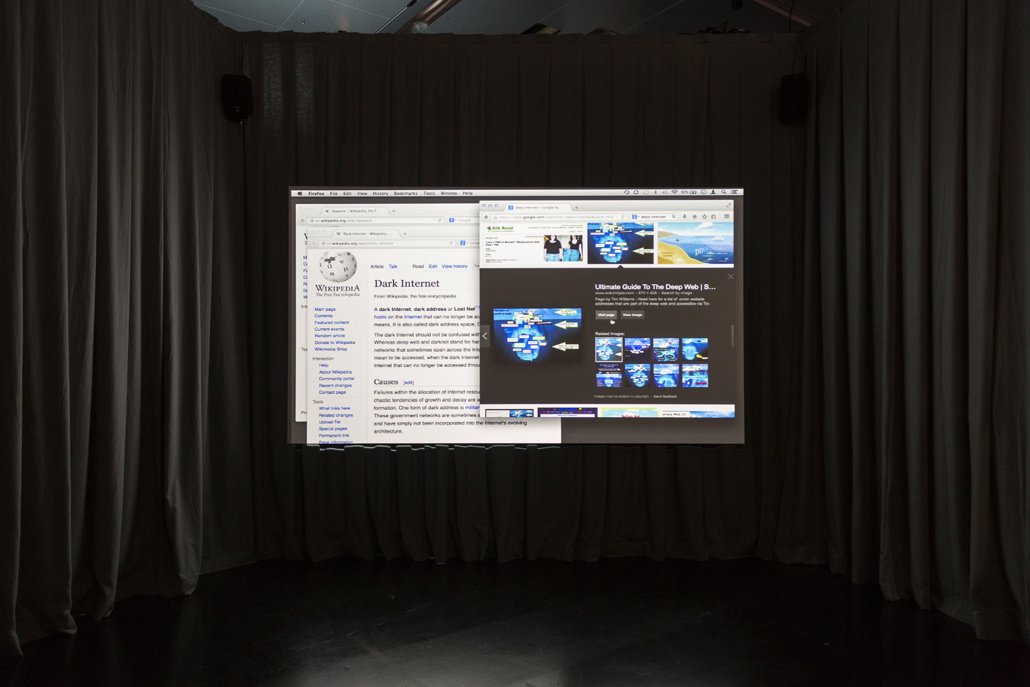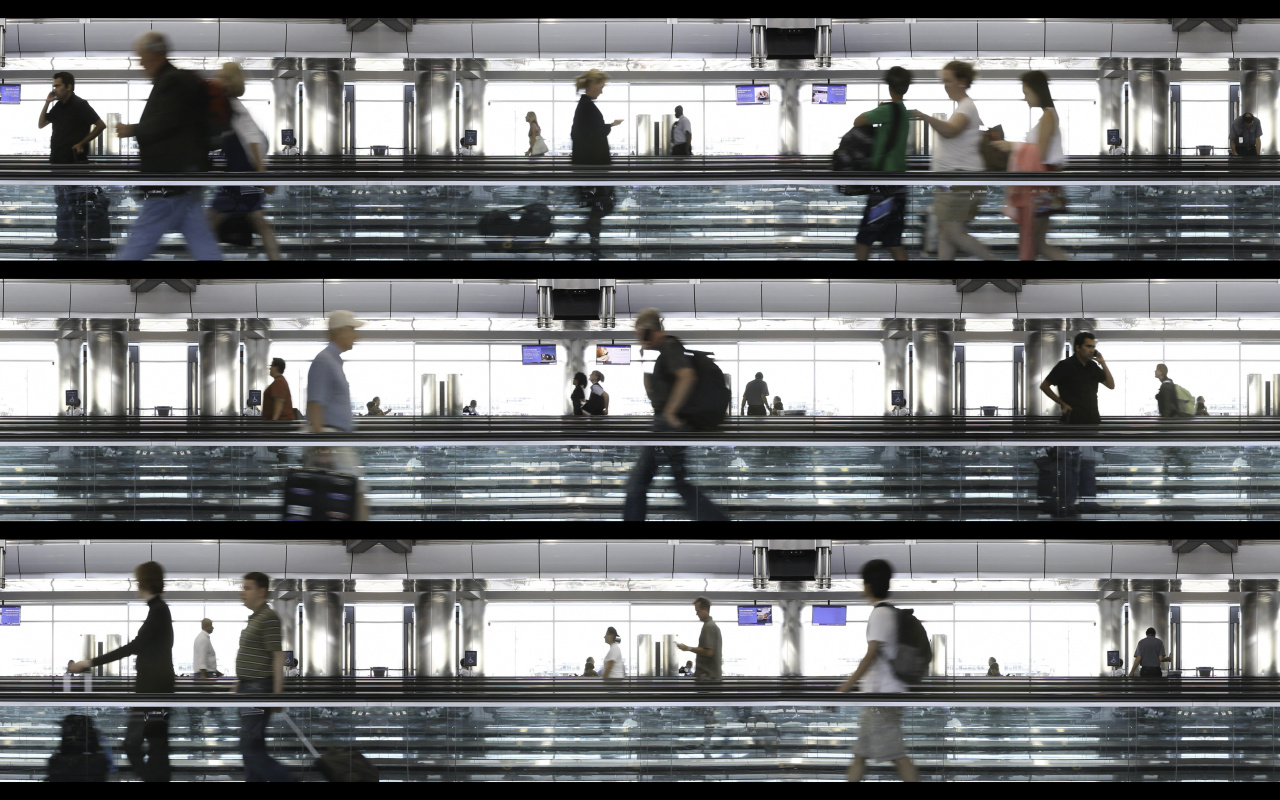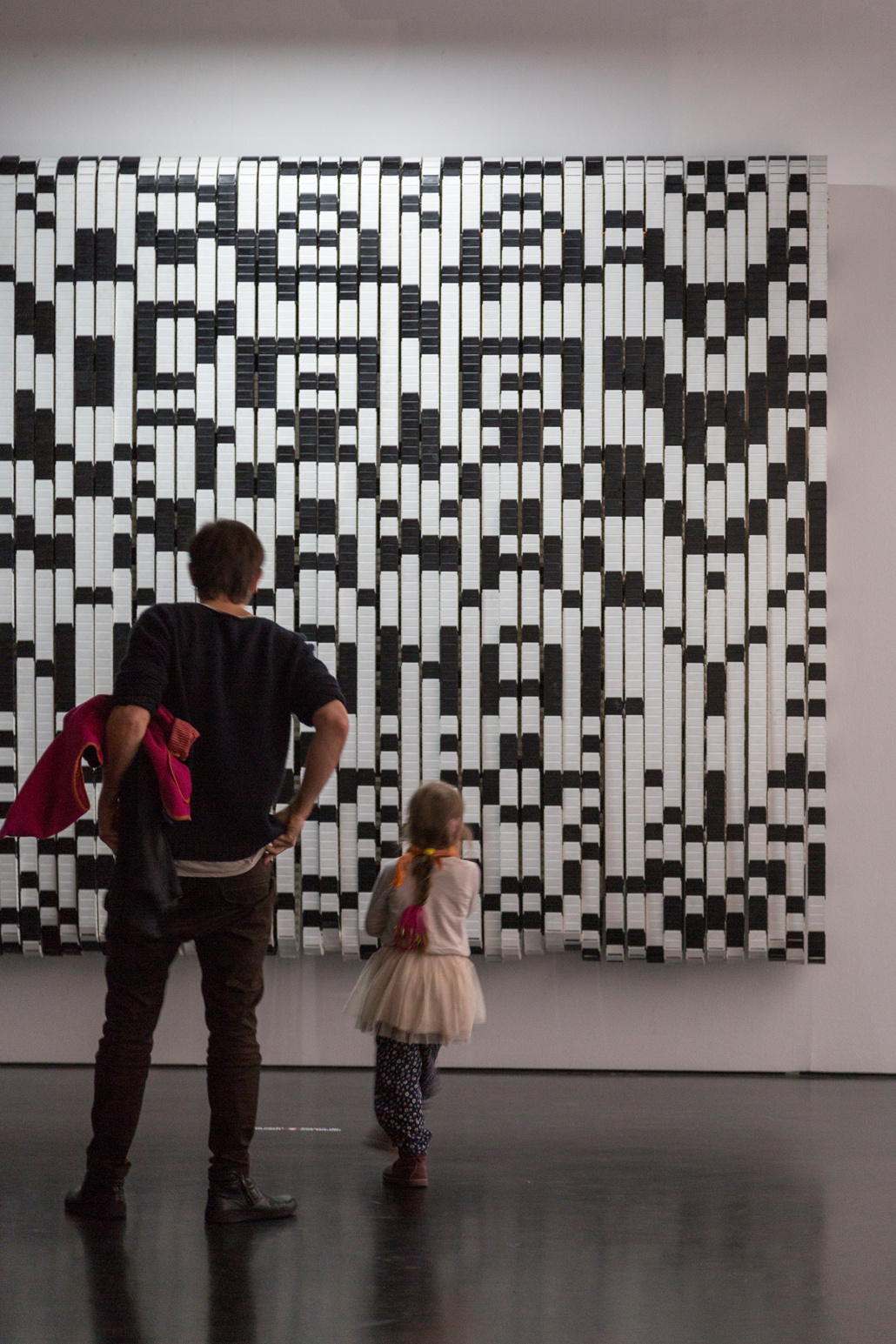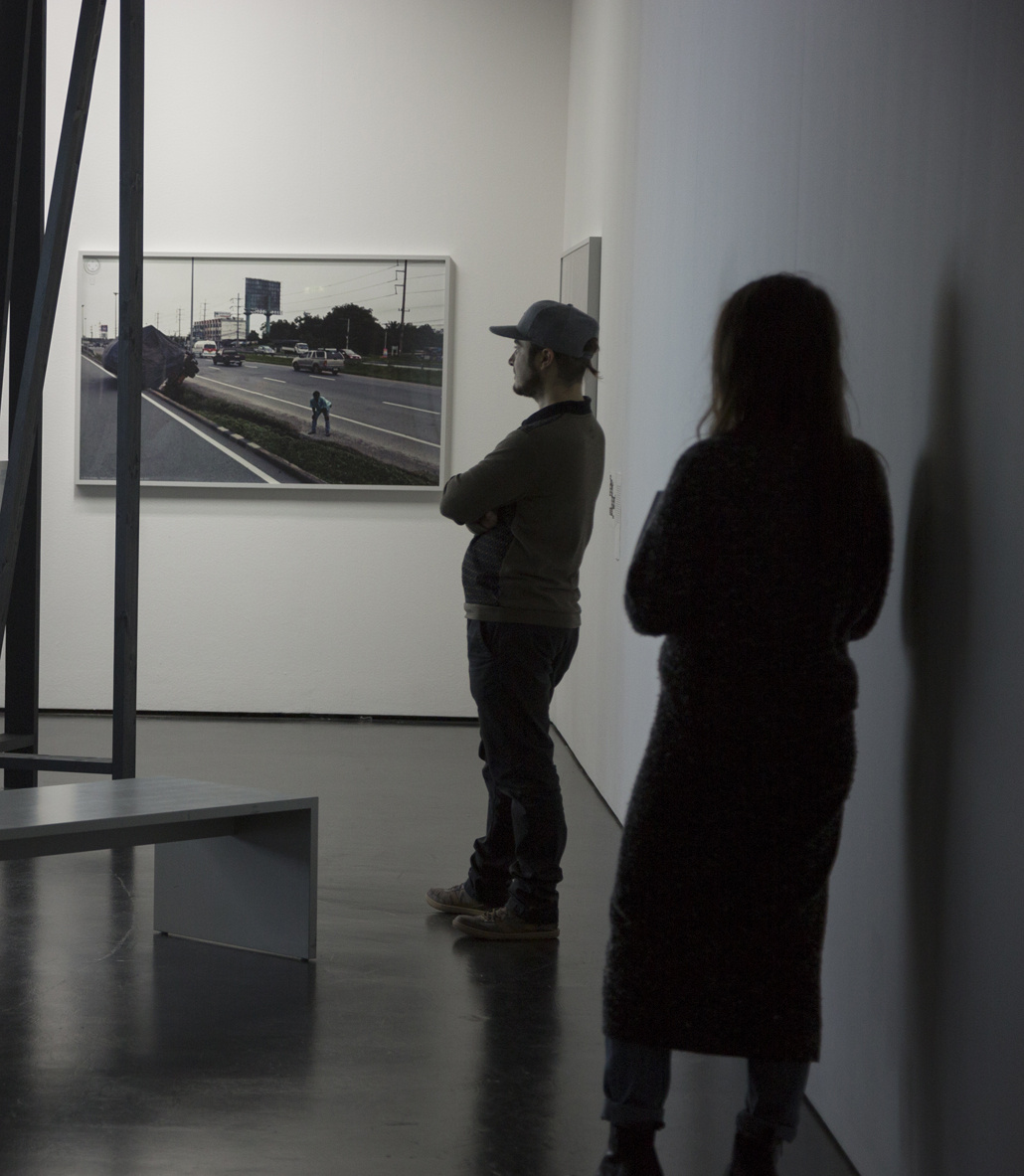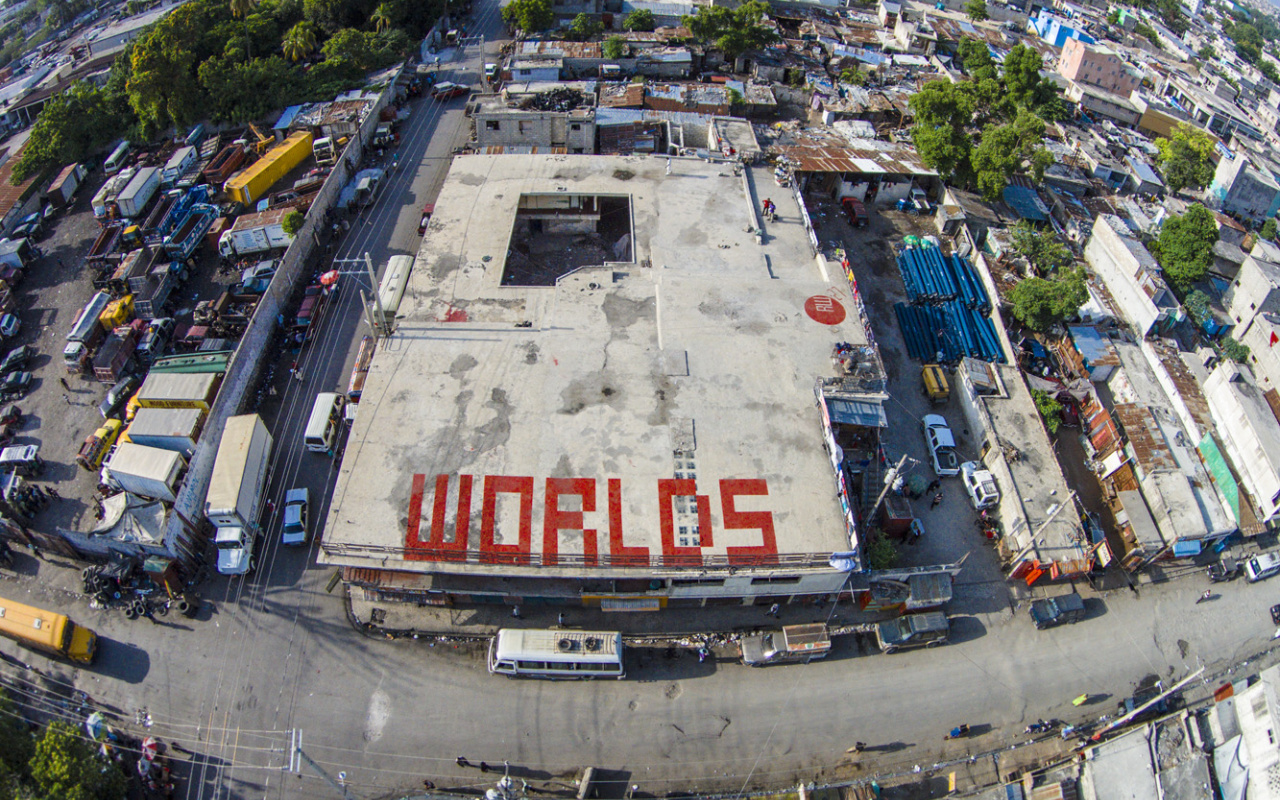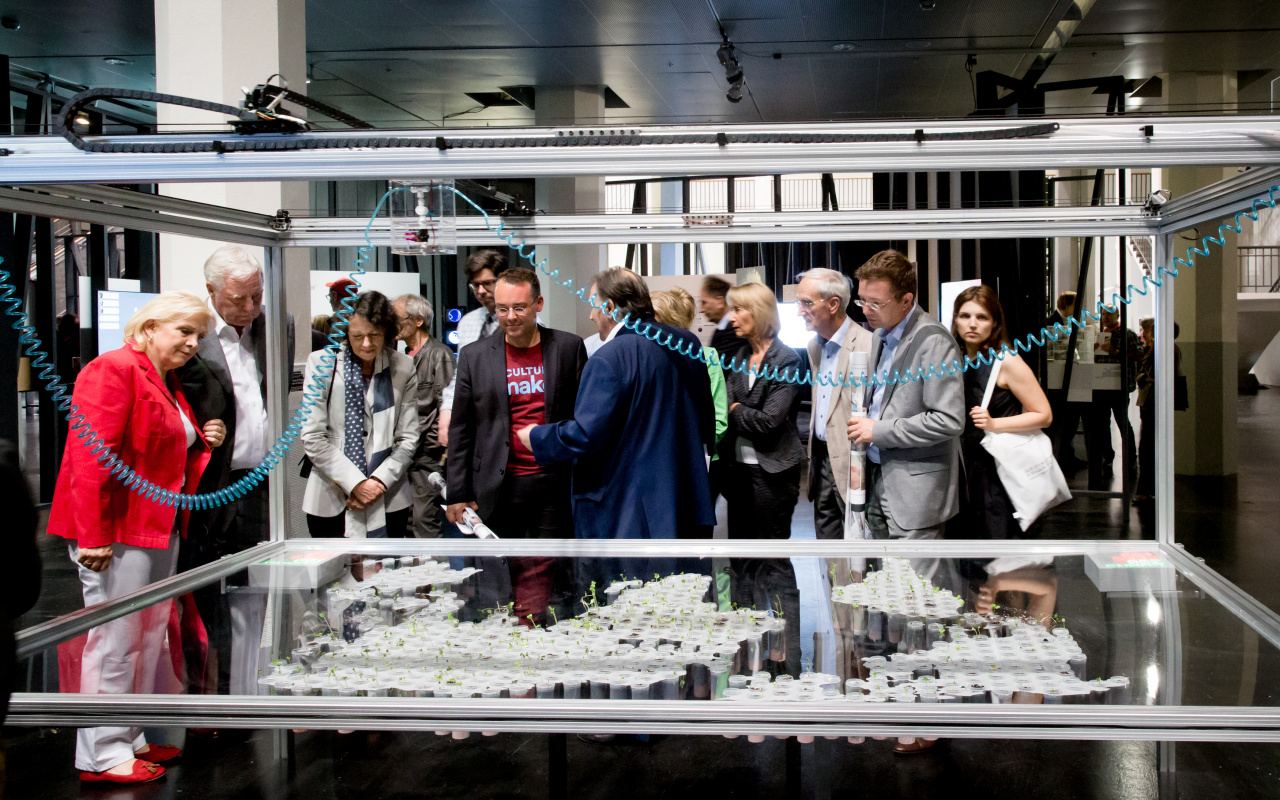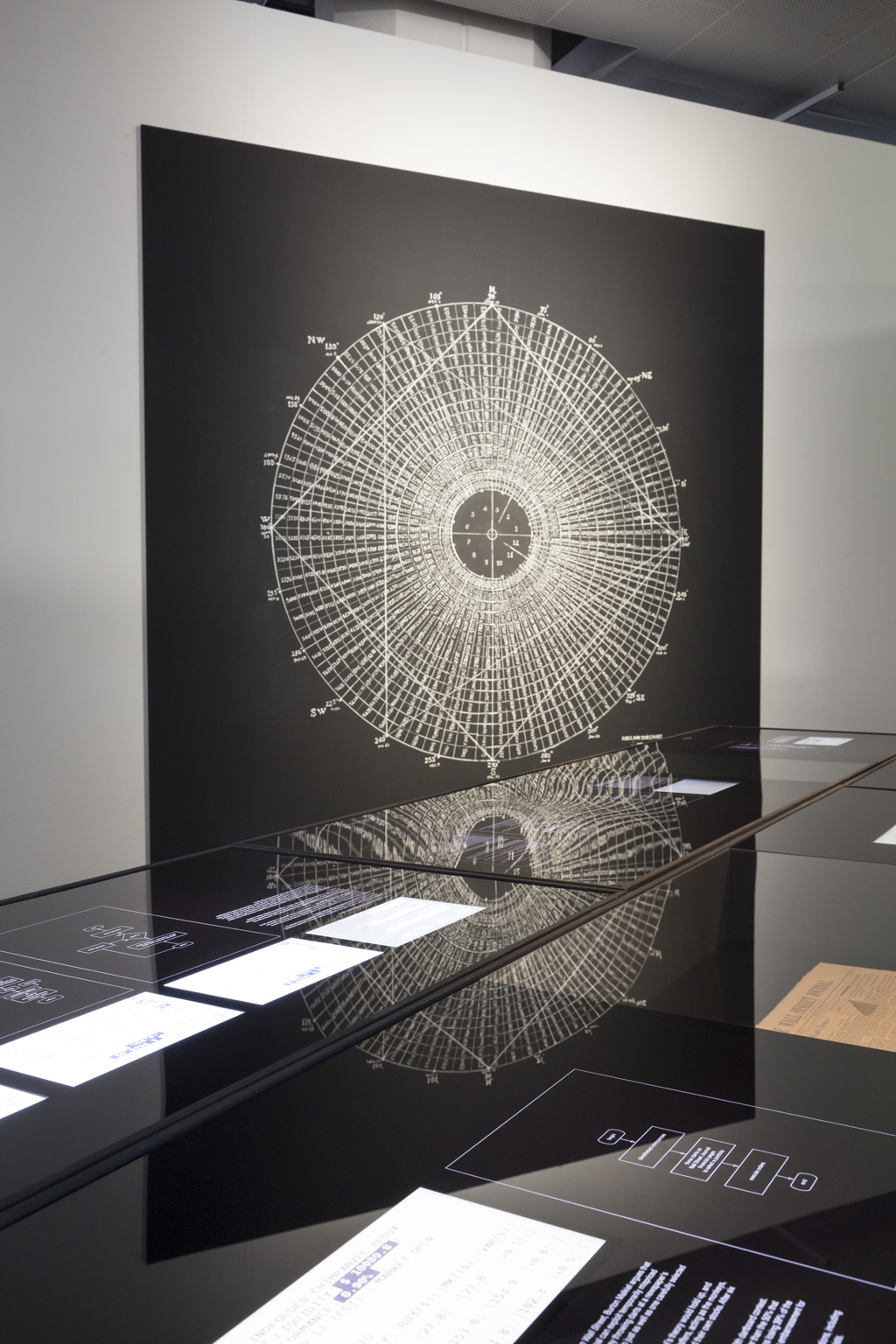Works of the Artists M–R
Infosphere
| M !Mediengruppe Bitnik: »Random Darknet Shopper – The Bot's Collection« Laurent Mignonneau & Christa Sommerer: »Portrait on the Fly« Jonathan Minard & James George: »CLOUDS« | N Warren Neidich: »The Search Drive« |
| O The Office for Creative Research: »Gate Change« The Otolith Group: »Anathema« | P Julius Popp: »bit.code« |
| Q | R Jon Rafman: »Warwick St, Gateshead, England, UK« & »Wang Noi, Phra Nakhon Si Ayutthaya, Thailand« REMOTEWORDS: »RW.26 –RW.30« Stephanie Rothenberg: »Reversal of Fortune: Garden of Virtual Kinship« RYBN.ORG: »The Algorithmic Trading Freakshow« |
_____________________________________________________________
!Mediengruppe Bitnik
Random Darknet Shopper – The Bot’s Collection (2015)
In the hidden underground of the Internet, which is not accessible via conventional browsers and search engines, markets flourish in which one can buy all conceivable things, including for example hard drugs and weapons of all kinds. The Zurich artist collective !Mediengruppe Bitnik has programmed a software that purchases automatically – without the influence of the artists – on these markets. The software had a budget of $100 in Bitcoins – an anonymous, digitally encrypted crypto currency – at its disposal. Among the things the so-called bot bought were fake sneakers and brand jeans, a credit card, a scan of a Hungarian passport and ecstasy pills. After an exhibition of the purchased items in St. Gallen, they were confiscated by the Swiss public prosecutor's office. But to what extent can software that acts without human influence be held responsible for illegal acts and how can confiscation be reconciled with the principle of artistic freedom? The Swiss authorities destroyed the ecstasy to avoid endangering third parties and finally returned the work to the artists. »Random Darknet Shopper« follows the tradition of mail art, in which the organized infrastructure of sending and receiving material by post is artistically transformed.
_____________________________________________________________
Laurent Mignonneau & Christa Sommerer
Portrait on the Fly (2015)
»Portrait on the Fly« consists of a series of interactive portraits and plotter drawings. Sommerer and Mignonneau have modeled virtual insects in such a way that they are able to arrange themselves in real time in the form of portraits of people. The work thus reflects Giuseppe Arcimboldo's fantastic head compositions from the mid-15th century, which Roland Barthes regarded as the result of a quasi-scientific undertaking. The insects recognize the facial features of the visitors and thus function in their behaviour as a kind of playful and visionary subversion of a facial recognition system. At the same time, the incessant, fluid movements of the flies, which react to the slightest change and thus lend the picture a constant volatility, are questioning the so-called »selfie culture«. »Portrait on the Fly« also exists in the form of plotter drawings and short video sequences. The artists themselves and numerous pioneers of media art in theory and practice (including Frieder Nake, Peter Weibel, Mark Wilson, Marie-Hélène Tramus and Christine Schöpf) appear in the series and thus emphasize the connection of the work to the broader traditions of media art that are always in flux.
_____________________________________________________________
Jonathan Minard & James George
CLOUDS (2014–2015)
»CLOUDS« is a community of artists, curators, designers and critics from the field of new media who question the value of code as a visual and artistic means of expression and reflect on the effects of emerging technologies on our lives. This interactive documentary invites viewers to explore a web of ideas by switching between the protagonists to control them. All of these key players belong to a generation of artists and hackers who use open source technologies for experiments in the fields of art and design. As a visually impressive hybrid of documentation and video game, »CLOUDS« gives digital pioneers a consistency in 3-D: they share their research approaches, visions and discoveries with us and give the infosphere back its rhizomatic aesthetics and theoretical essence. Each speaker provides a new perspective on contemporary scenarios as they arise from algorithms and codes, outlining a wide range of possibilities still waiting to be explored.
_____________________________________________________________
Warren Neidich
The Search Drive (2014/2015)
»The Search Drive« is a video in which software programs such as those used by National Security to spy on Americans and foreign citizens alike are disclosed and used to search the Internet for personal and confidential information about the artist. His accounts on Google, Facebook, Wikipedia and his bank are hacked. Together, these biographical outlines of Neidich's artistic work and work as well as his activities and friendships result in what he calls a »hackography«. A whole series of things are revealed about him: One of them is his relationship with and connection to his studio assistant Ashiq Khondker, a Bengali-American Singaporean emigre, whose actual activities are only unclear, but whose hypothetical contacts to radical movements in Berlin and the Far East can be assumed – in one of the found pictures he romps around with Pussy Riot, in another he wears Arab robes. Subsequently, a fictional biography of Warren Neidich will be created, based on links in the form of press releases, recordings of his works and videos of his performances. After an unofficial conviction, a drone launch program is initiated. It detects envious people in St. Petersburg during a performance at Manifesta 10. The video ends with a series of questions: »Are you sure you want to deploy drones?«.
_____________________________________________________________
The Office for Creative Research
Gate Change (2012)
If more air tickets are issued each year than there are people on earth, the question arises of how these huge quantities are channelled into orderly channels. The Office for Creative Research examines the advanced infrastructure of today's air traffic, processes the data using documentary footage and advanced visualization techniques, and allows viewers to imagine what it can look like when up to one million people are in the air. Ben Rubin, Jer Thorp and Mark Hansen try to make it clear that the flow of people on roads and at central junctions on the way to airports resembles more and more digital data packets that are bundled, sent, diverted and distributed. Quantitative analyses of recurring travel patterns are just as important as tracing the routes of individual passengers through duty-free shops and security locks, via escalators, in airport shuttles, elevators and the check-in area to the aircraft itself.
_____________________________________________________________
The Otolith Group
Anathema (2011)
»Anathema« by The Otolith Group plays with the well-known motifs of dream factory capitalism: the ideology of the LCD touch screen and the illusion of networking. At its core, capital is seen as a parasite, a shiny surface that enters the world and transforms human interaction into profit. The film imagines a kind of third dimension in which liquid crystals expand into everyday life. At the same time, this is a metaphor for ubiquitous, overwhelming capitalism, as well as the abstract representation of a world of sensibilities, where people seem to act out of erotic impulses to resist the illusionary connections that communicative capitalism promotes instead of real contacts. As an abstract translation of the all-encompassing capitalist magic, the film is steeped in a psychedelic atmosphere in which the boundaries between man and machine blur and virtual space becomes a real space. Instead of predicting a state, Anathema portrays a dimension that is already shaping our lives.
_____________________________________________________________
Julius Popp
bit.code (2009)
The work »bit.code« plays with one of the central themes in Popp's work: the recoding of information and the recognizability of signs. It explores the infinite possibilities of combining a finite number of bits, the smallest data or information units. The bits appear as black and white elements in individual sections of several chains. Each chain is encoded using the same bit patterns, reminiscent of Morse code. When they get moving, the chains produce words that can only be read for a short moment and disappear again as soon as the chains continue their movement. The word input is formed by the terms that appear most frequently on a number of selected news websites according to a statistics-based search program. Thus, they also reflect which terms currently have the greatest validity in our culture. The perceived data provide the viewer with brief opportunities for moments of contemplation and clarity – before the permanent flow of arrangements, movements and changes begins anew. At the same time, »bit.code« illustrates the fact that we can only decode the information that is always contained in the bits of the chains if it is transferred into a known font code for us. Therefore, the chain patterns themselves contain complex information, and every readable word that appears is not the solution to the whole, but only a small partial decoding.
_____________________________________________________________
Jon Rafman
Warwick St, Gateshead, England, United Kingdom (2009)
Wang Noi, Phra Nakhon Si Ayutthaya, Thailand (2012)
The prints on display are part of the 9-Eyes project, the title of which is borrowed from Google technology: since 2007, Google has been using nine cameras to take panoramic images of roads around the world that become part of Google Street-View – an application of Google Maps. Since 2007 Jon Rafman has been taking screenshots of individual Street-View images before they are removed from the program by Google Maps filters. The Google copyright and the direction arrows of Street-View give the pictures special authenticity. Cyberflaneur and archaeologist Rafman appropriates the images of the world seen by the machine. However, his motifs, which bear witness to the violence, chance and peculiarity of reality, stand in drastic contradiction to the apparently cool and neutral aesthetics of machine vision. Rafman collects eerie-looking traces and is interested in the marginale. The artist sees himself as a photojournalist who makes clear what Henri Cartier-Bresson called moment décisif – a decisive moment in which everything comes together to capture an iconographically concise motif.
_____________________________________________________________
REMOTEWORDS (Uta Kopp / Achim Mohné)
RW.26 – RW.30: ONE EARTH UNITES MANY WORLDS (2015)
REMOTEWORDS is a long-term project of the artist duo Achim Mohné and Uta Kopp, which was launched in 2007. Messages are placed on the roofs of cultural institutions in huge capital letters that are not directly legible, but only become comprehensible when viewers take a certain distance from them. Satellite views of our planet, which are provided by Google Earth or Bing Maps, for example, are the appropriate tools for this purpose. REMOTEWORDS follows the methods of land art and uses satellite photography as an artistic medium and for the distribution of news. In the current project, a sentence written by Peter Weibel is divided and installed on five cultural institutions on five continents. In addition to Karlsruhe – where the Embassy will be located in front of the ZKM | Karlsruhe – the joint embassy will be published in four other locations, in Taipei, Port-au-Prince, Johannesburg and Auckland.
_____________________________________________________________
Stephanie Rothenberg
Reversal of Fortune: Garden of Virtual Kinship (2013)
Stephanie Rothenberg's interactive, kinetic installation »Reversal of Fortune: Garden of Virtual Kinship« addresses the new cultural phenomenon of crowdfunding for charity. Rothenberg's installation is directly connected to the website www.kiva.org and feeds itself from its data. Kiva is a US non-profit organization whose purpose is to lend individualized micro amounts and microloans via the Internet to small businesses and individuals in developing countries. Alternative financing models for business ideas can thus emerge in economically weak regions of the world. Rothenberg visualizes this form of development aid, which makes use of the infrastructure of the infosphere, by means of the impressive metaphor of an irrigation system: in the exhibition space there are water tanks above a world map equipped with over 650 plants. A robot arm waters the plants depending on the amounts of money donated via the Internet. If not donated, the plants dry up. The map therefore directly depicts the flourishing and atrophying regions of the world and makes the abstract, hidden infrastructure of data and money transfer physically tangible for visitors.
_____________________________________________________________
RYBN.ORG
The Algorithmic Trading Freakshow (2013/2015)
The financial crisis since 2007 in particular has made it clear how non-transparent the mechanisms of financial speculation are, which are capable of destabilising the global economy and manipulating markets. Among other things, the high-frequency trading of securities, which is controlled without human intervention by algorithms, makes incredible profits possible today. Hardly any other industry is currently undergoing such fundamental transformations through information technology as the financial world. The first attempts to predict the price movement on the markets using different – often esoteric – methods, from probability theory to quantum physics and algorithm engineering, were made in the early 20th century, shortly after the introduction of financial mathematics by Louis Bachelier. The artist collective RYBN.ORG documents these attempts in a collection of obsolete, often bizarre trading experiments, pseudo-scientific attempts to justify the reaction of the markets, for example meteorologically or astrologically, as well as algorithms of speculative trading that have been used since the 1970s.

